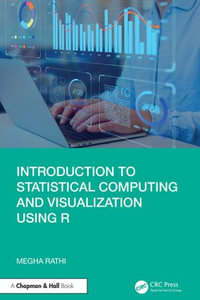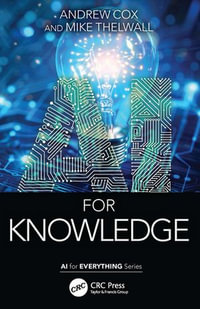
eTEXT
Compressed Sensing with Side Information on the Feasible Region
By: Mohammad Rostami
eText | 15 May 2013
At a Glance
eText
$64.99
or
Instant online reading in your Booktopia eTextbook Library *
Read online on
Desktop
Tablet
Mobile
Not downloadable to your eReader or an app
Why choose an eTextbook?
Instant Access *
Purchase and read your book immediately
Read Aloud
Listen and follow along as Bookshelf reads to you
Study Tools
Built-in study tools like highlights and more
* eTextbooks are not downloadable to your eReader or an app and can be accessed via web browsers only. You must be connected to the internet and have no technical issues with your device or browser that could prevent the eTextbook from operating.
ISBN: 9783319003665
ISBN-10: 3319003666
Series: SpringerBriefs in Electrical and Computer Engineering
Published: 15th May 2013
Format: ePUB
Language: English
Publisher: Springer Nature
You Can Find This eBook In
Non-FictionComputing & I.T.Computer ScienceArtificial IntelligenceComputer VisionEngineering & TechnologyElectronics & Communications EngineeringElectronics EngineeringOther Technologies & Applied SciencesApplied OpticsImaging Systems & TechnologyScience
PhysicsStatistical PhysicsScience in GeneralMaths for ScientistsMathematicsApplied MathematicsImage ProcessingReference, Information & Interdisciplinary SubjectsResearch & InformationInformation theoryCybernetics & Systems TheoryDigital Signal Processing (DSP)Calculus & Mathematical AnalysisNumerical Analysis
This product is categorised by
- Non-FictionComputing & I.T.Computer ScienceArtificial IntelligenceComputer Vision
- Non-FictionEngineering & TechnologyElectronics & Communications EngineeringElectronics Engineering
- Non-FictionEngineering & TechnologyOther Technologies & Applied SciencesApplied OpticsImaging Systems & Technology
- Non-FictionSciencePhysicsStatistical Physics
- Non-FictionScienceScience in GeneralMaths for Scientists
- Non-FictionMathematicsApplied Mathematics
- Non-FictionComputing & I.T.Computer ScienceImage Processing
- Non-FictionReference, Information & Interdisciplinary SubjectsResearch & InformationInformation theoryCybernetics & Systems Theory
- Non-FictionComputing & I.T.Computer ScienceDigital Signal Processing (DSP)
- Non-FictionMathematicsCalculus & Mathematical AnalysisNumerical Analysis























